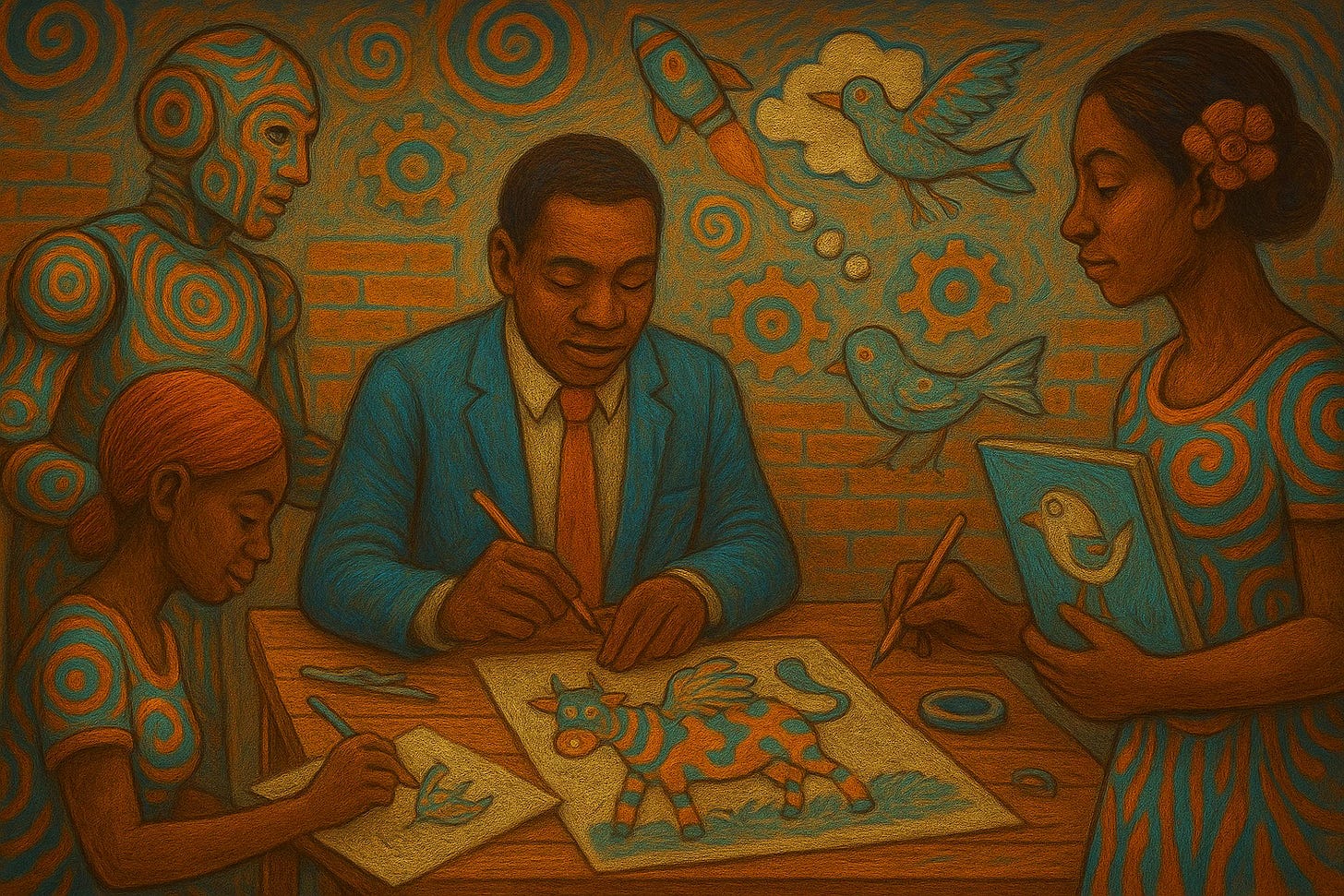Inventing the Unimaginable: Using Forced Connections to Rethink the Familiar
Learning with ACRE - 043
Introduction
Creativity often involves making connections—between ideas, experiences, or disciplines—that others might overlook. One powerful technique to build this skill is known as Forced Connections. This approach invites us to deliberately combine unrelated concepts or objects and explore what emerges. It can be used to generate fresh ideas, solve problems, and stretch your creative muscles.
Forced Connections work because it short-circuits logical thinking and activates lateral thinking. By linking things that don't naturally go together, you create new possibilities and often arrive at unexpected yet valuable insights. For example, Velcro was inspired by burrs sticking to a dog’s fur—an everyday observation paired with textile design. This kind of surprising cross-pollination often yields the most inventive breakthroughs.
What Is It?
Forced Connections is a creative thinking method where you intentionally pair unrelated ideas, objects, or themes to spark new ideas. It is commonly used in design, brainstorming, writing, and innovation workshops.
You might connect:
A toaster with a musical genre – What would a jazz-inspired toaster look or behave like?
A bicycle with a tree – Could we design a bike that grows or evolves like a tree?
A cooking method with customer onboarding – What if onboarding were like marinating or slow roasting?
The idea is not to find the “right” answer but to stimulate new ways of seeing and thinking. These playful explorations help uncover metaphors, structural insights, and surprising applications.
Why Is It Essential?
It breaks habitual thought patterns that limit ideation
It encourages divergent thinking and mental flexibility
It reveals hidden relationships between seemingly unrelated concepts
It opens up surprising avenues for innovation and experimentation
It strengthens your ability to reframe and reimagine familiar problems
Especially in problem-solving and strategic thinking, Forced Connections help generate alternatives when conventional thinking stalls. It nurtures a mindset that is receptive to novelty and ambiguity—qualities essential for adaptive leadership and future-oriented planning.
Join us at ACRE29, Africa’s Premier Creativity and Creative Thinking Conference in 2025 at Klein Kariba, South Africa! https://acreconference.com
How to Implement It
Choose Your Challenge – Define the problem, theme, or idea you want to explore. It could be “How might we increase customer engagement?” or “What could make meetings more energising?”
Select a Random Stimulus – Choose a word, image, object, or concept unrelated to the challenge. Use a dictionary, random word generator, or image deck, or grab any item within reach. There are also creativity tools like Oblique Strategies, the Brainstormer app, or Rory’s Story Cubes that can help.
Make the Connection – Ask: How does this unrelated item relate to my challenge? What would happen if I applied its function, structure, behaviour, or symbolism to my context?
List Possibilities – Generate multiple ideas. Be bold, stretch the analogy, and let absurdity in. Even silly ideas often contain sparks of brilliance.
Reflect and Refine – Choose one or two ideas with promise and develop them. Ask, “How might I prototype this?” or “What insight does this metaphor unlock?”
Illustrative Example
Let’s revisit our Ghanaian street food vendor, known for serving grilled plantains in banana leaves with spice maps and a storytelling experience.
Challenge: How might the vendor reinvent packaging to further stand out?
Random Object Chosen: Umbrella (selected using a random household object list)
Forced Connection Thinking:
An umbrella opens and closes—what if the packaging opened in a dramatic, unfolding way?
Umbrellas provide shelter—could the packaging protect hands from heat or mess?
Umbrellas are often colourful and patterned—what if the banana leaf wrap was stamped or dyed with vibrant, local designs?
Idea Generated: A fold-out banana leaf pouch that opens like a fan, revealing compartments for plantains, spices, and a folded spice story. It adds theatre to the experience and helps manage heat and mess.
Outcome:
Customers engage with the food like a gift or ritual
Packaging becomes a conversation piece that draws attention on social media
A stronger brand identity emerges from the sensory and cultural design
Repeat customers return, excited to see what the next “fan wrap” design might be
Local artisans are engaged to create stamp patterns, supporting community creativity
What Becomes Possible When You Practise This?
By using Forced Connections, you:
Access more diverse, creative solutions that you would not arrive at through logic alone
Build the habit of playful experimentation that fuels innovation
Increase your tolerance for ambiguity and complexity
Boost your confidence in stretching ideas across domains or industries
Discover new metaphors and conceptual bridges that make your ideas more relatable and powerful
This technique is especially effective in group settings, where each person brings different interpretations to the same forced pair. It sparks laughter, surprise, deeper engagement, and democratic participation. In workplace settings, it can help teams move from overused strategies to fresh, co-created solutions.
Try This: Pick an object on your desk. Now, relate it to a problem you're currently facing. What metaphors, patterns, or parallels can you draw? Even a pencil has lessons about fragility, refinement, and erasure. Or try this with a team: pick a random object and ask each member to relate it to a shared challenge. Collectively explore the possibilities.
Creativity thrives on unexpected relationships. Forced Connections gives you a playful, structured way to find them—and reminds us that sometimes, the most original ideas come from pairing the unlikely with the urgent.
Join us at ACRE29, Africa’s Premier Creativity and Creative Thinking Conference in 2025 at Klein Kariba, South Africa! https://acreconference.com


